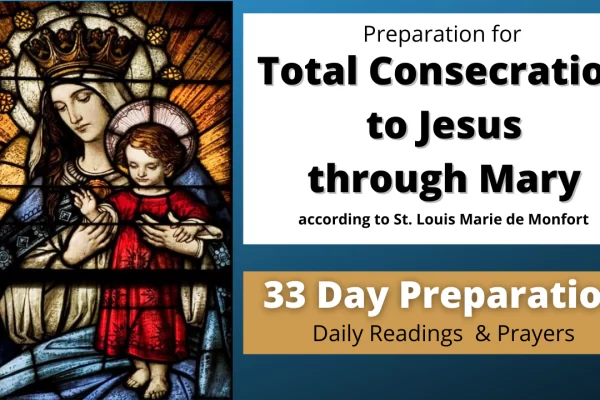
Free Printable HandBook |
Saint Louis-Marie de Montfort’s 33 DaysTotal Consecration to Jesus Through Mary Powered By EmbedPress

Saint Louis-Marie de Montfort’s 33 DaysTotal Consecration to Jesus Through Mary Powered By EmbedPress
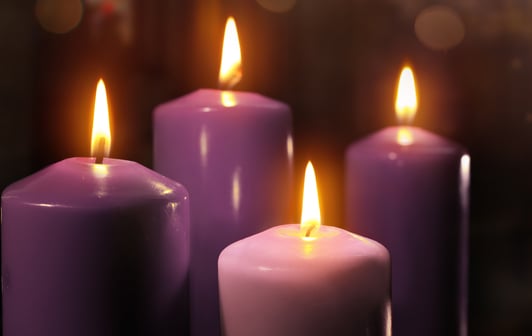
5 Steps to Prepare Yourself for a Holy Advent The Season of Waiting, Hope, and Preparation As we approach the holy season of Advent, the Church invites us into a time of waiting, reflection, and spiritual preparation. Advent is not simply the countdown to Christmas, but a sacred journey of prayer and purification, where we prepare our hearts to welcome the Lord, who comes to us in many forms—through His Word, through His people, and in His second coming. Let us, then, take up the call to prepare ourselves spiritually and mentally, so that when the Christ Child arrives, our hearts are ready to receive Him. Here are five steps, each with meditations, prayers, and Scripture to guide you on your way to a holy Advent. 1. Re-Examine Your Heart: A Time of Repentance and Purification Advent invites us to examine our hearts and to cleanse ourselves of sin and distractions. Just as the Israelites longed for the Messiah, so too should we yearn for Christ’s presence in our lives. This first step is to prepare the way by purifying our hearts through repentance. Scripture Meditation“Prepare the way of the Lord, make straight his paths.” (Matthew 3:3)This call from John the Baptist reminds us that we must clear away any obstacles in our lives that hinder us from fully embracing God’s love. Through repentance, we make room for the Lord to enter our hearts more deeply. Prayer of RepentanceLord, as we prepare for Your coming, help us to see where we have strayed from Your path. Forgive us for our sins, heal our brokenness, and give us the strength to walk in Your ways.“Create in me a clean heart, O God, and renew a right spirit within me.” (Psalm 51:10) Homily ThoughtAdvent calls us to a deeper self-awareness, where we recognize our need for God’s mercy and grace. Just as we clean our homes in preparation for guests, so too must we purify our hearts, allowing the light of Christ to shine more brightly within us. Repentance is not only about acknowledging sin but making a conscious decision to turn back to God, to make space for Him once again. 2. Renew Your Prayer Life: A Time of Deepening Communion with God Advent is a time to renew our commitment to prayer. In the hustle and bustle of daily life, it can be easy to neglect our time with God. This season calls us back to the practice of prayer, whether through the Liturgy of the Hours, personal devotion, or meditation on the Scriptures. Scripture Meditation“But the end of all things is at hand; therefore be serious and watchful in your prayers.” (1 Peter 4:7)This verse reminds us that prayer is our connection to God and our means of remaining vigilant as we await His coming. Prayer keeps our hearts focused and our spirits prepared. Prayer for Strength in PrayerLord, help me to make time each day to be with You. In the busyness of this world, teach me to listen to Your voice and to keep my heart in constant communion with You.“Lord, teach us to pray.” (Luke 11:1) Homily ThoughtAdvent is a time of expectant waiting, but it is also a time for deepening our relationship with God through prayer. As we await the coming of Christ, we are reminded that prayer is not just about asking for things, but about sitting with the Lord in silence, allowing His presence to fill our hearts. 3. Cultivate a Spirit of Hope: Trust in God’s Promises Advent is a season of hope. The word “Advent” itself means “coming,” and we are called to anticipate the fulfillment of God’s promises—both His coming in history, when He was born in Bethlehem, and His future coming in glory at the end of time. It is a time to renew our hope in Christ. Scripture Meditation“The people who walked in darkness have seen a great light; those who dwelt in a land of deep darkness, on them has light shone.” (Isaiah 9:2)This prophecy is a beautiful reminder that even in the darkest of times, God’s light breaks through, offering hope and salvation. We are called to live in that light, trusting that Christ will return to bring about the fullness of His Kingdom. Prayer of HopeLord, as I wait for Your coming, fill my heart with hope. Help me to trust in Your promises, even when the world around me seems dark and uncertain.“Lord, I believe; help my unbelief.” (Mark 9:24) Homily ThoughtAdvent is a time to awaken our hearts to the light of Christ. The darkness of the world, filled with uncertainty, can tempt us to despair. But Advent reminds us that Christ is our hope, and His coming is the light that drives out the darkness. May we wait in hope, knowing that He is faithful to fulfill His promises. 4. Practice Charity: A Time to Serve Others During Advent, we are invited to make room for others, especially the poor, the lonely, and the suffering. Charity—both spiritual and corporal—is an essential part of our preparation for Christ’s coming. Our acts of love and service to others prepare us to receive Christ, who came to serve and save. Scripture Meditation“For I was hungry and you gave me food, I was thirsty and you gave me drink, I was a stranger and you welcomed me.” (Matthew 25:35)In this famous passage, Jesus teaches us that serving others is a way to serve Him. Advent is an opportunity to practice this kind of radical love, reaching out to those in need, especially during the Christmas season. Prayer for CharityLord, teach me to love as You loved, to give without counting the cost, and to serve those in need with a joyful heart.“Lord, when did we see You hungry or thirsty? When did we see You a stranger and welcome You?” (Matthew 25:37) Homily ThoughtIn the Incarnation, Christ shows us that love is not abstract; it is concrete, manifested in acts of service. During Advent,…
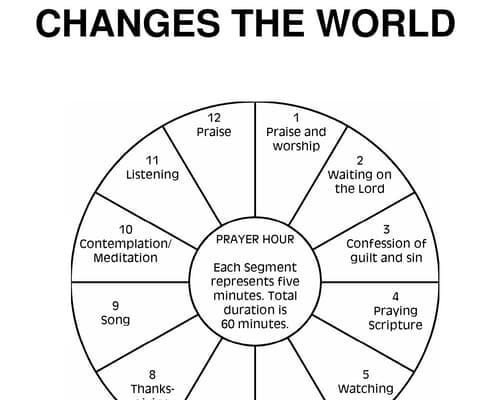
https://youtu.be/kscXVKAJn9c?si=jiWW93ADDdyiG2bS Download the prayer journal below! Powered By EmbedPress

Chronology of WW3 According to Catholic Prophecies Exploring Catholic Mystics’ Insights into Modern Global Tensions Catholic prophecy has long spoken of an apocalyptic conflict involving multiple nations, leading to divine chastisement and ultimate renewal. While World War III (WW3) is not explicitly named, the mystics and visionaries of the Church have described events that closely parallel the tensions unfolding in the modern world, including in the Middle East, Eastern Europe, and beyond. Here is a detailed chronology, weaving prophetic revelations with contemporary geopolitics. 1. Prelude to the Conflict: Spiritual and Moral Decay Catholic prophecy often emphasizes that war is a consequence of humanity’s rejection of God. Our Lady of La Salette (1846): “The Church will be in eclipse, the world will be in dismay.” This foretells a widespread loss of faith and moral decay as precursors to global conflict. St. Faustina Kowalska (1930s): In her diary, she records Christ’s warning that mankind’s sinfulness could lead to great suffering: “If they do not repent, a greater punishment will come.” Modern parallels: Growing secularism and apostasy, even within the Church. Escalation of societal divisions over issues like abortion, gender ideology, and religious freedom. The global acceptance of moral relativism, which weakens the spiritual foundation of nations. 2. Geopolitical Flashpoints: The Middle East and Eastern Europe The Israel-Iran-Palestine Conflict Catholic mystics have hinted at the Middle East being a flashpoint for a great war. Fr. Stefano Gobbi (Marian Movement of Priests): He spoke of “a terrible crisis that will erupt in the heart of the Holy Land.” St. Nilus the Myrrh-Gusher (5th century): Prophesied a time of “wars erupting over sacred lands.” Modern developments: Rising tensions between Israel and Iran over nuclear weapons. The escalating Israel-Palestine conflict, marked by religious and territorial disputes, could spark wider regional warfare, drawing in global powers. The Russia-Ukraine War The Russia-Ukraine war aligns with prophecies regarding the role of Russia in future global conflict. Our Lady of Fatima (1917): “Russia will spread her errors throughout the world, causing wars and persecutions of the Church.” While this primarily referred to communism, the aggressive actions of Russia today are seen as part of this warning. Sr. Elena Aiello (1950s): “Russia will march upon all the nations of Europe, particularly Italy, and will raise her flag over St. Peter’s.” Modern developments: The ongoing war in Ukraine threatens to escalate, with NATO and other global powers increasingly involved. Potential alliances between Russia, China, and Iran add to the complexity, raising fears of a broader conflict. 3. The Spark: A Sudden and Global Escalation Catholic mystics have described WW3 as a sudden and unexpected eruption of violence that consumes the world. Blessed Elena Aiello: “Another terrible war will come from the East to the West. Russia with her secret armies will battle America.” Marie-Julie Jahenny: She foresaw civil wars, natural disasters, and invasions leading to a global conflagration. Modern parallels: The potential for a sudden attack by Iran or its proxies on Israel, leading to a broader Middle Eastern war. Russia’s growing aggression, potentially targeting other European nations. Cyberwarfare and nuclear threats heighten the risk of rapid escalation. 4. The Role of China and the East Catholic prophecy often includes references to the rise of powerful Eastern nations. St. John Bosco: In his visions, he saw an Eastern power invading Europe, causing widespread devastation. Our Lady of Akita (1973): “Fire will fall from the sky and will wipe out a great part of humanity.” Some interpret this as a reference to modern weapons, including those from Asia. Modern parallels: China’s growing military strength and alliances with Russia and Iran position it as a potential catalyst for WW3. Tensions in the South China Sea and Taiwan could spark a broader Pacific conflict, involving the U.S. and its allies. 5. The Climax: The Three Days of Darkness The height of the conflict is marked by a supernatural event—the Three Days of Darkness. Blessed Anna Maria Taigi: She described the earth being engulfed in total darkness for three days. Only blessed candles would provide light, and those outside God’s grace would perish. Marie-Julie Jahenny: “The air will be infected, and storms of fire will fall from the sky.” This event symbolizes divine intervention to end the war, purging evil from the world. 6. The Aftermath: The Triumph of the Immaculate Heart After the chastisement, Catholic prophecies foretell a period of peace and spiritual renewal. Our Lady of Fatima: “In the end, my Immaculate Heart will triumph, and a period of peace will be granted to the world.” St. John Bosco: In his visions, he saw the Church emerging victorious, guiding the world to a new era of faith. Modern hopes: These prophecies encourage the faithful to trust in God’s plan, even amid chaos. Devotion to the Rosary and the Sacred Heart are emphasized as means of spiritual protection. Spiritual Response Catholic prophecy, while foreboding, is ultimately a call to conversion. The faithful are urged to: Pray the Rosary daily for peace. Consecrate themselves to the Immaculate Heart of Mary. Practice penance to atone for the sins of the world. Sources and Further Reading The Secrets of Fatima by Sister Lucia Prophecies of Blessed Elena Aiello The Mystical Revelations of Marie-Julie Jahenny St. John Bosco’s Dreams and Visions This detailed chronology ties together the warnings of Catholic mystics with the geopolitics of our time, emphasizing the need for prayer and trust in God as humanity faces its greatest trials.

Preparing Your Heart for the Feast of Christ the King The Feast of Christ the King, celebrated on the last Sunday of the liturgical year, is a glorious reminder of the sovereignty of Jesus Christ over all creation. Instituted by Pope Pius XI in 1925 through his encyclical Quas Primas, this solemnity calls us to recognize Christ as the King of our lives and to prepare our hearts for His reign. How do we approach this feast with reverence and love? Here are five ways to spiritually prepare for this beautiful celebration: 1. Reflect on the Kingship of Christ Take time to meditate on Scripture passages that emphasize the kingship of Jesus. Consider praying with: John 18:36: “My kingdom is not of this world.” Colossians 1:13-20: A hymn to Christ, the King of all creation. Let these verses remind you that Christ’s kingship is one of humility, love, and ultimate sacrifice. Unlike earthly rulers, His kingdom is eternal and transcends worldly powers. 2. Make a Personal Act of Consecration Consecrate yourself and your family to Christ the King. A simple act of consecration might include this prayer: “O Jesus Christ, I acknowledge You as the King of my heart. Reign over my thoughts, desires, and actions. May Your will be done in my life, as it is in Heaven. Amen.” This act is a tangible way of inviting Christ to take His rightful place in your life. 3. Participate in Eucharistic Adoration Christ the King is most profoundly present in the Holy Eucharist. Spending time in Adoration is a powerful way to acknowledge His kingship. As you kneel before the Blessed Sacrament, offer Him your joys, sorrows, and all that you are. Pray with the words of St. Thomas Aquinas:“Adoro Te Devote, latens Deitas…” (I devoutly adore You, hidden God.) 4. Examine Your Allegiance The feast invites us to examine our hearts and reflect on what truly rules our lives. Are we more loyal to our comfort, pride, or worldly possessions than to Christ? Spend time in an Examination of Conscience and identify areas where you need to realign your priorities. Receive the Sacrament of Reconciliation to remove any barriers to His reign in your soul. 5. Celebrate with Joyful Thanksgiving The Feast of Christ the King is not only about solemn reflection but also about joyful celebration. Attend Holy Mass and proclaim, “Viva Cristo Rey!” (Long live Christ the King!) Share a special meal with loved ones, reflecting the joy of the Kingdom of Heaven. Consider acts of charity, as serving others mirrors the servant leadership of our King. Living Under Christ’s Kingship As we approach this feast, let us recommit ourselves to Christ, remembering that His reign brings peace, justice, and hope to a troubled world. Through Him, we become heirs to the Kingdom of God—a kingdom not built on power but on sacrificial love. May this Feast of Christ the King inspire us to live as faithful subjects, awaiting the day when every knee will bow and every tongue confess that Jesus Christ is Lord. Viva Cristo Rey! LITANY TO THE CHRIST THE KING Lord, have mercy on us, Lord, have mercy on us.Christ, have mercy on us, Christ, have mercy on us.Lord, have mercy on us. God, our Heavenly Father, Who has made firm for all ages your Son’s Throne, Have mercy on us. God the Son, Jesus, our Victim-High Priest, True Prophet, and Sovereign King, Have mercy on us. God the Holy Spirit, poured out upon us with abundant newness, Have mercy on us. Holy Trinity, Three Persons yet One God in the Beauty of Your Eternal Unity, Have mercy on us. R. Reign in our hearts.O Jesus, our Eternal King,O Jesus, Most Merciful King,O Jesus, extending to us the Golden Scepter of Your Mercy,O Jesus, in Whose Great Mercy we have been given the Sacrament of Confession,O Jesus, Loving King Who offers us Your Healing Grace,O Jesus, our Eucharistic King,O Jesus, the King foretold by the prophets,O Jesus, King of Heaven and earth,O Jesus, King and Ruler of All Nations,O Jesus, Delight of the Heavenly Court,O Jesus, King Most Compassionate toward Your subjects,O Jesus, King from Whom proceeds all authority,O Jesus, in whom, with the Father and the Holy Spirit, we are One,O Jesus, King Whose Kingdom is not of this world,O Jesus, King Whose Sacred Heart burns with Love for all mankind,O Jesus, King Who is the Beginning and the End, the Alpha and the Omega,O Jesus, King Who has given us Mary, the Queen, to be our dear Mother,O Jesus, King Who will come upon the clouds of Heaven with Power and Great Glory,O Jesus, King Whose Throne we are to approach with confidence,O Jesus, King truly present in the Most Blessed Sacrament,O Jesus, King Who made Mary the Mediatrix of All Graces,O Jesus, King Who made Mary Co-Redemptrix, Your partner in the Plan of Salvation,O Jesus, King Who desires to heal us of all division and disunity,O Jesus, King wounded by mankind’s indifference,O Jesus, King Who gives the balm of Your Love with which to console Your Wounded Heart,O Jesus, King Who is the Great I AM within us, our Wellspring of Pure Delight, R. May we serve You.Jesus, King of All Nations, True Sovereign of all earthly powers,Jesus, King of All Nations, subjecting under Your feet forever the powers of hell ,Jesus, King of All Nations, the Light beyond all light, enlightening us in the darkness that surrounds us,Jesus, King of All Nations, Whose Mercy is so Great as to mitigate the punishments our sins deserve,Jesus, King of All Nations, recognized by the Magi as the True King,Jesus, King of All Nations, the Only Remedy for a world so ill,Jesus, King of All Nations, Who blesses with Peace those souls and nations that acknowledge You as True King,Jesus, King of All Nations, Who Mercifully sends us your Holy Angels to protect us,Jesus, King of All Nations, Whose Chief Prince is Saint Michael the Archangel,Jesus, King of All Nations, Who…

It might seem a bit odd that a saint from nearly 800 years ago would be the patroness of television—but that’s exactly the case! St. Clare of Assisi was officially given this title by Pope Pius XII in 1957. Born in 1194 into a noble family, Clare turned her back on wealth and privilege to embrace a life of faith. Inspired as a teenager by St. Francis of Assisi, she became his devoted follower. At a time when no other women had joined his mission, Clare was sent to live at a Benedictine monastery. Soon after, her sister joined her, and together they established a new community near the Church of San Damiano in Assisi, which would later become known as the Poor Clares. Clare’s devotion to poverty was unshakeable. Even bishops and popes couldn’t sway her commitment to a simple life rooted in trust in God. She led her order with unwavering determination and humility. As she aged, Clare’s health declined significantly. On one Christmas Eve, too ill to attend Mass, she longed to be with her community for the celebration. Tradition holds that God granted her a miraculous vision: the sights and sounds of the Mass were projected onto the wall of her room, allowing her to participate from afar. Fast forward centuries to the invention of television—literally meaning “vision from afar”—and this miraculous story must have come to mind for Pope Pius XII. Recognizing both the potential for good and the dangers of this powerful new medium, he declared St. Clare the patroness of television, entrusting the world of screens to her intercession. Pius XII, in a prophetic reflection on the medium, noted that television could bring great blessings but also serious challenges. Who better to guide its influence than a saint known for her humility, simplicity, and steadfast faith? On Valentine’s Day, 1957, St. Clare was formally named the patroness of television, reminding us that even in the world of modern technology, we can look to the saints for guidance. St. Clare of Assisi, pray for us!
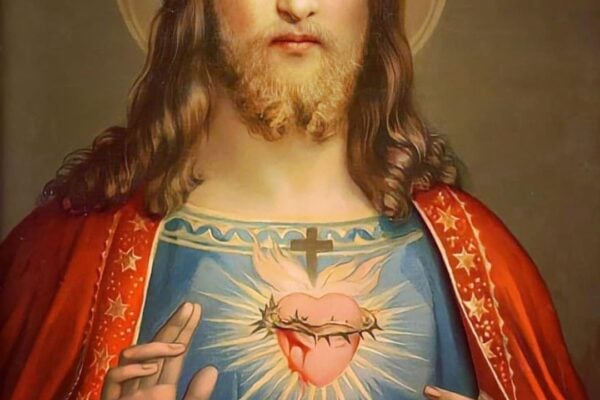
O Lord Jesus Christ, To your most Sacred Heart, I confide this/these intention: (mention your intention) Only look upon me, And then do What your Sacred Heart inspires. Let your Sacred Heart decide I count on it, I trust in it I throw myself on Your mercy, Lord Jesus! You will not fail me. Sacred Heart of Jesus, I trust in You. Sacred Heart of Jesus, I believe in Your love for me. Sacred Heart of Jesus, Your Kingdom come. O Sacred Heart of Jesus, I have asked you for many favors, But I earnestly implore this one. Take it. Place it in Your open, broken Heart; And, when the Eternal Father looks upon It, Covered with Your Precious Blood, He will not refuse it. It will be no longer my prayer, But Yours, O Jesus. O Sacred Heart of Jesus, I place all my trust in You. Let me not be disappointed. Amen.
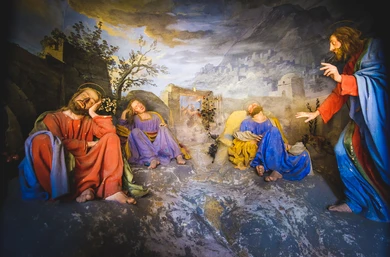
To pray a holy hour, all you need is a tabernacle with a lit sanctuary lamp, a Bible, and perhaps a Compendium of the Catechism of the Catholic Church (available online). Three Rules 1. Be Silent. Don’t rattle prayers or silently review stresses. Be still exteriorly and interiorly. 2. Be Attentive. It’s not simply a reading hour — reading should be an entry-point to prayer. 3. Be Alert. Sit, stand, or kneel respectfully. Quick tip: If you get sleepy, stand up! Minute-by-Minute There is no one way to pray a holy hour. The following might help if you get lost in the hour, but feel free to reconfigure it to suit your needs. :00-:05 – Begin First 5 Minutes: Ask the Holy Spirit to help you, then make acts of faith, hope and charity. Tell God how you believe, trust and love him. Ask for more faith, hope and love. Quick tip: There are great prayers to the Holy Spirit and Acts of Faith, Hope and Love in the Compendium. :05-:15 – Adoration Next 10 Minutes: Adore God. He holds the universe like a seed in the palm of his hand. He is all powerful, all good, more beautiful than we can imagine, and more real than the small things that we grasp so easily. Imagine Christ sitting with you. Tell him: “Oh my God, I adore your divine greatness from the depths of my littleness; you are so great, and I am so small.” or “Glory be …” Repeat as long as necessary. Quick Tip: Try the Te Deum in the Compendium. Scriptural helps for adoration—Exodus 33:18-23; Song of Songs 2:8-17; Matthew 2:1-11; John 1:1-18; Colossians 1:15-20; Philippians, 2:6-11. :15-:25 – Contrition Next 10 Minutes: Offer reparation. It’s not your love for God, but his for you that saves. Examine your conscience. Offer reparation for the sins of the world. Pray: “Oh my Jesus, I am so sorry. Forgive me.” (Imagine Jesus on the cross; kiss each wound.) Quick tip: Scriptures for contrition—1Corinthians 13:4-7; Colossians 3:5-10; 1 Timothy 1:12-17; James 3:2-12; 1 John 1:5-2:6; Penitential Psalms: 6, 32, 38, 51, 102, 130, 142. :25-:40 – Meditation Next 15 Minutes: Contemplate God’s action. You may wish to meditatively pray the Stations of the Cross or a Rosary. Or: Scriptural meditation. Read a brief Gospel passage. Imagine the scene. Notice Christ’s reactions. Think of three ways the passage applies to your own life. Meditate on each line. Doctrinal meditation. Read Scripture or Catechism passages that apply to a doctrine of the Church. Appreciate God’s plan and find ways it applies to you. (Perhaps: Sun, Resurrection; Mon, Incarnation; Tues, Mercy/confession; Wed, Holy Spirit; Thurs, Eucharist; Fri, Passion; Sat., Mary). Life meditation. Or, deepening your examination of conscience, look at your own life. Which kind of pride do you most fall into? Selfishness (valuing yourself most), Vanity (valuing others opinions most), Sensuality (valuing comforts most). Pray for the opposite virtues: Charity (serving others first), Fidelity (putting Christ’s opinion first), Discipline (accepting your crosses). :40-:50 – Thanksgiving Next 10 Minutes: Express gratitude for all God’s gifts. He didn’t just create you, he sustains your existence out of love in every moment. Thank him for literally everything, and be specific: food, shelter, clothing, health, family, friends, teachers, coworkers, home, and most of all spiritual gifts — faith, hope, love, this time of prayer, the Catholic faith, the disciples who reached you. Thank God for answers to prayer. Thank him for crosses. Thank him for creating you and caring so much for you that he died for you. Quick tip: Scriptures for thanksgiving – Genesis 1; Genesis 8:15-22; Job 1:13-22; Daniel 3:46 ff.; Matthew 6:25-34; Luke 17:11-19; Psalms: 8, 65, 66, 100, 111. :50-:55 – Petition God Next 5 Minutes: Ask God for what you and others need. He is the king of the universe. He’s in control, even when it isn’t obvious. Pray for: The Church, the pope’s intentions, for those who are suffering, for priests and bishops, for religious, for vocations, for your country, your family, for what you need most in the spiritual life. Pray for peace and the protection of the institution of the family. Pray for those who have asked for prayers. :55-1:00 Final 5 Minutes: Make a resolution to act on a light of the Holy Spirit you received: something doable and checkable. Read more…
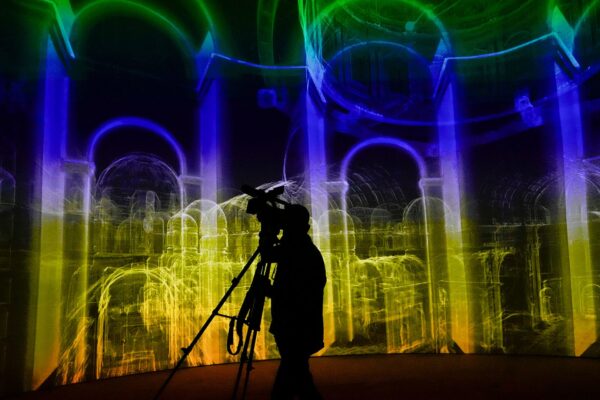
https://youtu.be/375qvk06Zf4 Entitled “St. Peter’s Basilica: AI-Enhanced Experience,” an AI-enabled project was unveiled on Monday in collaboration with Microsoft and Iconem, a heritage digitalization company, as the Church prepares for the Jubilee celebrations in 2025. As speakers at a press conference explained, the digital creation of a replica of St. Peter’s Basilica allows for immersive virtual tours and in-depth digital exhibitions that bring the grandeur of the Renaissance marvel into much sharper focus. Cardinal Mauro Gambetti, the Archpriest of St. Peter’s Basilica, expressed his delight during the briefing, comparing the experience to gazing at a “starry sky on a summer night.” “The new tools act like a telescope or spaceship for better viewing,” he said, capturing the essence of this remarkable digital expansion. A partnership between ancient and modern The partnership between the Vatican and Microsoft is notable not only for its ambition but also for its innovative use of technology in service of faith and heritage, said Microsoft President Brad Smith, speaking at the press conference. In an interview with Vatican News’ Fabio Colagrande, Smith reflected on the unique role technology can play in bridging past and present. “I believe it adds to the spiritual experience of pilgrims coming to Rome,” he said, recalling that “Just going through it myself yesterday, gave me even more insight into the memory of Saint Peter, his life, and what he stood for. It brings that history to life.” Smith explained that the virtual experience offers a new perspective, allowing viewers to “see parts of the Basilica that one cannot see,” and through the digital exhibit, visitors can access spaces usually out of reach, like the Roman tombs below and intricate artwork in the Basilica’s high dome. Read more…